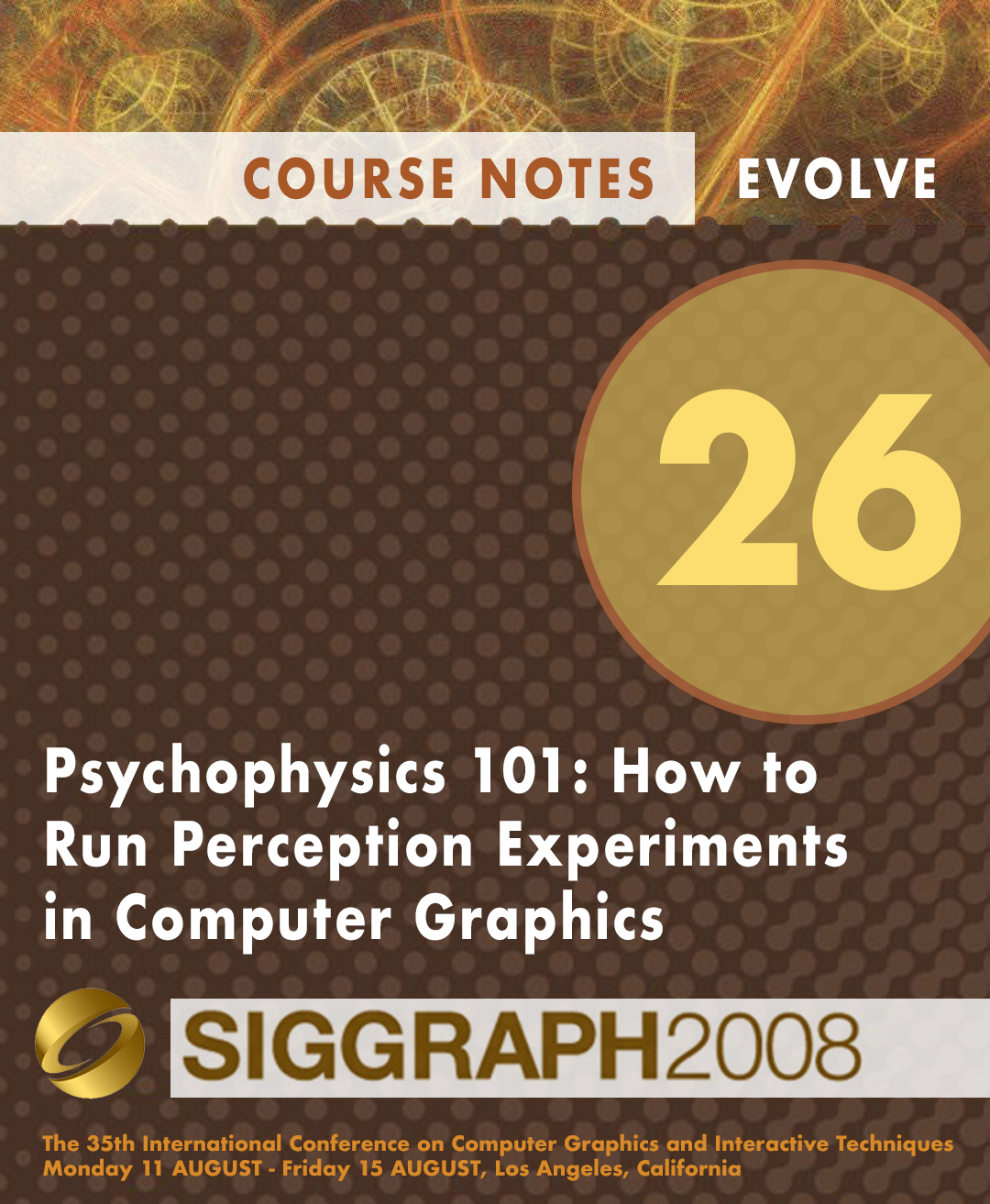“Psychophysics 101: How to Run Perception Experiments in Computer Graphics” by Ferwerda
Conference:
Type(s):
Entry Number: 26
Title:
- Psychophysics 101: How to Run Perception Experiments in Computer Graphics
Course Organizer(s):
Presenter(s)/Author(s):
Abstract:
Prerequisites
This course assumes a basic level understanding of issues in computer graphics and electronic imaging. Familiarity with freshman-level college math will be helpful. No specific knowledge of perception psychology or statistical methods will be required. All relevant concepts will be introduced in the class.
Description
Psychophysical methods from experimental psychology can be used to quantify the relationships between the properties of images and what people perceive. The results of psychophysical experiments can be used to create predictive models of human perception that can guide the development of effective and efficient graphics algorithms and enabling graphical interfaces. This course will provide an introduction to the use of psychophysical methods in computer graphics and will teach attendees how to develop experiments that can be used to advance graphics research and applications. Throughout the presentation, graphics-relevant examples will be used so attendees will understand how to design and run their own experiments; analyze the results; and develop perceptually-based algorithms and applications. This course will be of interest to members of the graphics community who want to be able to interpret the results of perception psychology experiments and develop their own user studies of computer graphics techniques.




